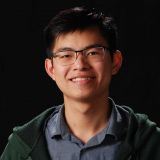Computational Models of Protein Phase Separation on Curved Surfaces
Abstract
Biological liquid-liquid phase-separation plays an important role in the formation of cellular microstructures and protein organization. For example, experiments have shown that proteins (SynGAP and PSD-95) exhibit liquid-liquid phase transitions in neuronal structures and may influence the formation of postsynaptic densities (PSD). We develop theoretical descriptions and practical numerical methods for investigating phase separation at the particle and continuum levels on curved surfaces. We develop a Markov-Chain model of drift-diffusion processes for modeling protein dynamics and coupling to phase field models (such as Ginzburg-Landau fields) to account for phase transitions within cellular membranes. We perform studies of the roles of geometry in protein phase separation toward better understanding protein kinetics within neuronal dendritic spines.
